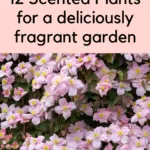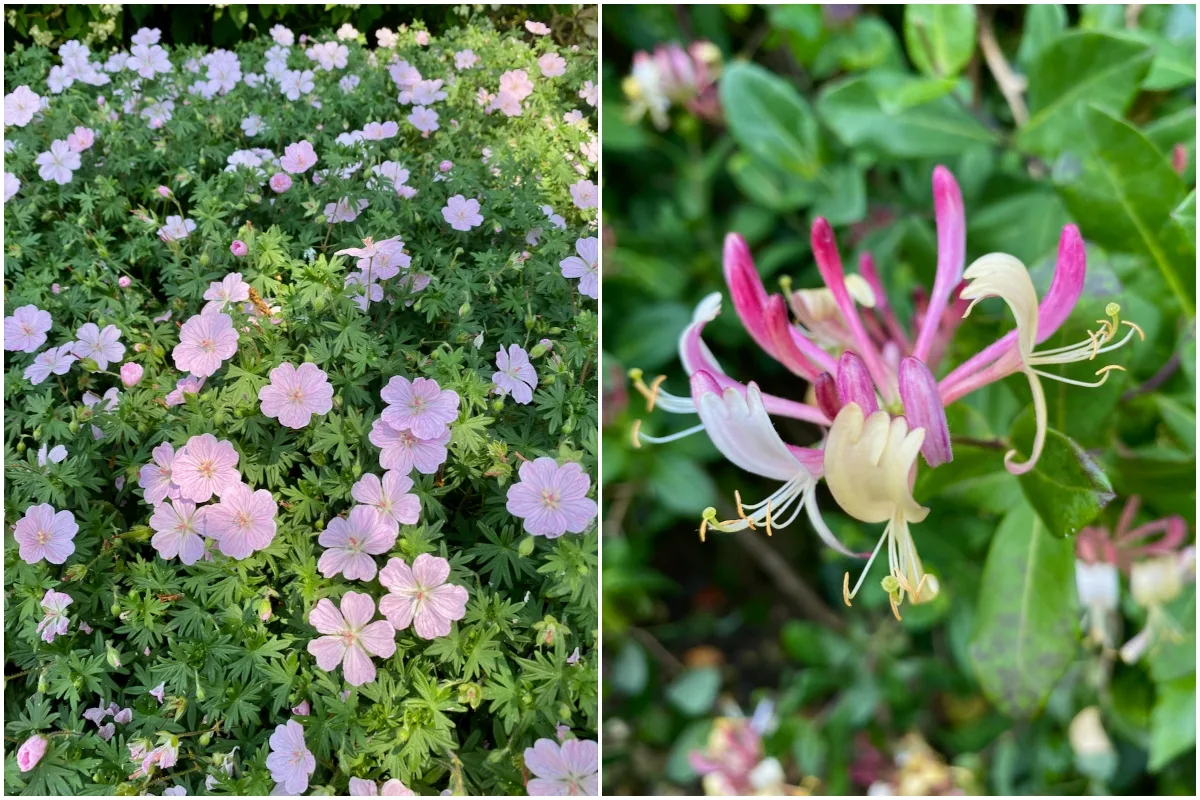
I walk outside into my garden, in the dappled light that’s still lingering past 10 PM. It’s a few days past midsummer; my work day is long over, but the daylight outside makes it impossible to think about going to sleep.
After a hot day, the air has cooled and there’s a gentle breeze that carries all the scents of the garden. The first one to greet me is the sweet fragrance of honeysuckle. I close my eyes instinctively, just for a couple of seconds, in order to heighten my sense of smell.
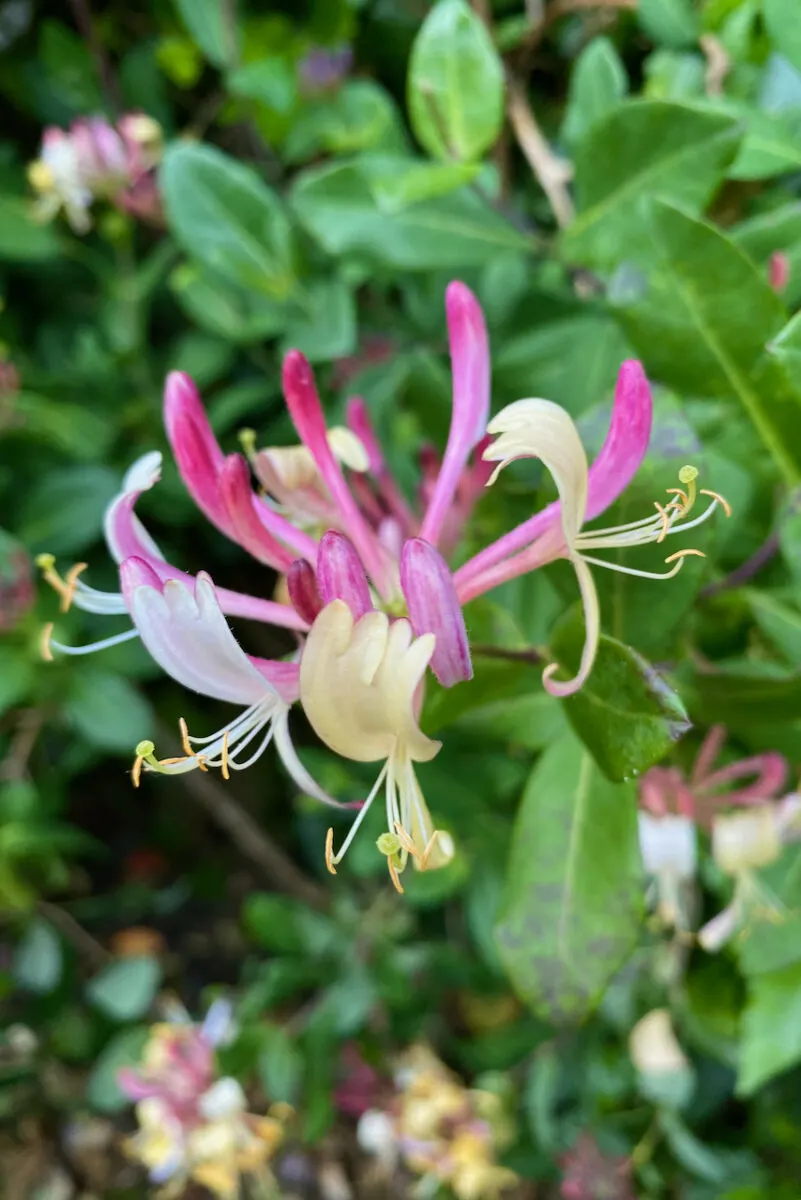
Suddenly, I’m sitting across from my grandma and her sister. They’re merrily chatting away sitting at a table under an arch of sweet honeysuckle as the dusk settles on another hot midsummer day. I’m thumbing through a picture book while surreptitiously listening to their lighthearted gossip. My five-year-old self doesn’t understand much, but what a glorious night to be allowed to stay up late at the adult’s table.
I open my eyes again and I’m back in my own garden. It’s three decades later and both women have long gone to a more peaceful place. I think to myself that, even three decades from now, the scent of honeysuckle is bound to trigger this core memory again.
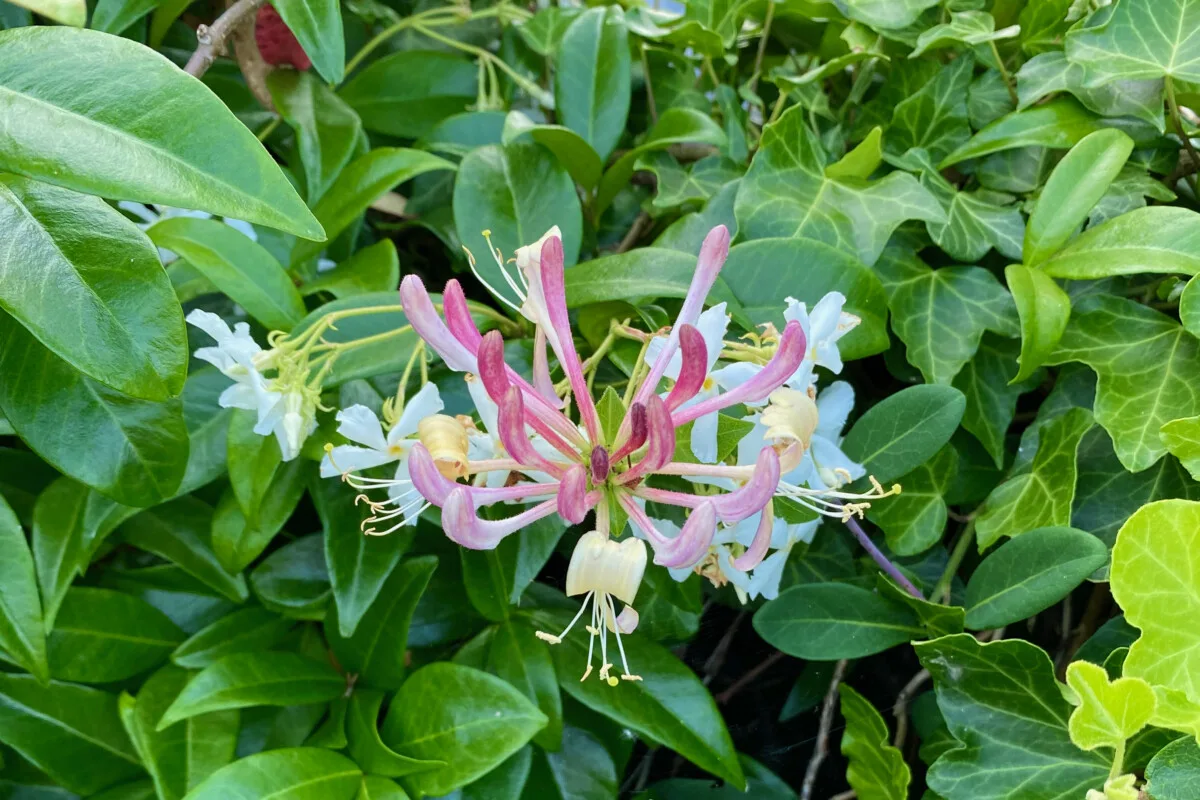
I’m sure that you, too, have a scent that you associate with a particular time, place or person in your past. That’s because the sense of smell is hardwired to the emotional centers in the brain – the amygdala and the hippocampus. And until about the age of ten years old, our scent is the most developed of our senses.
As gardeners, we’re generally visual people, so we usually tend to focus on how the plants look, their colors and their height. But what if we designed a garden with scent in mind?
Here are some of my favorite plants that will make your garden smell heavenly.
1. Scented roses (Rosa)
I simply have to start with roses. Wouldn’t life feel more joyous if we all stopped and smelled the roses? Unfortunately, not all roses smell.
As a result of our thirst for bigger, bolder, showier cultivars, we have been sacrificing the fragrance at the expense of beauty in some of the newer ones. But there are still over a thousand cultivars of fragrant roses in circulation.
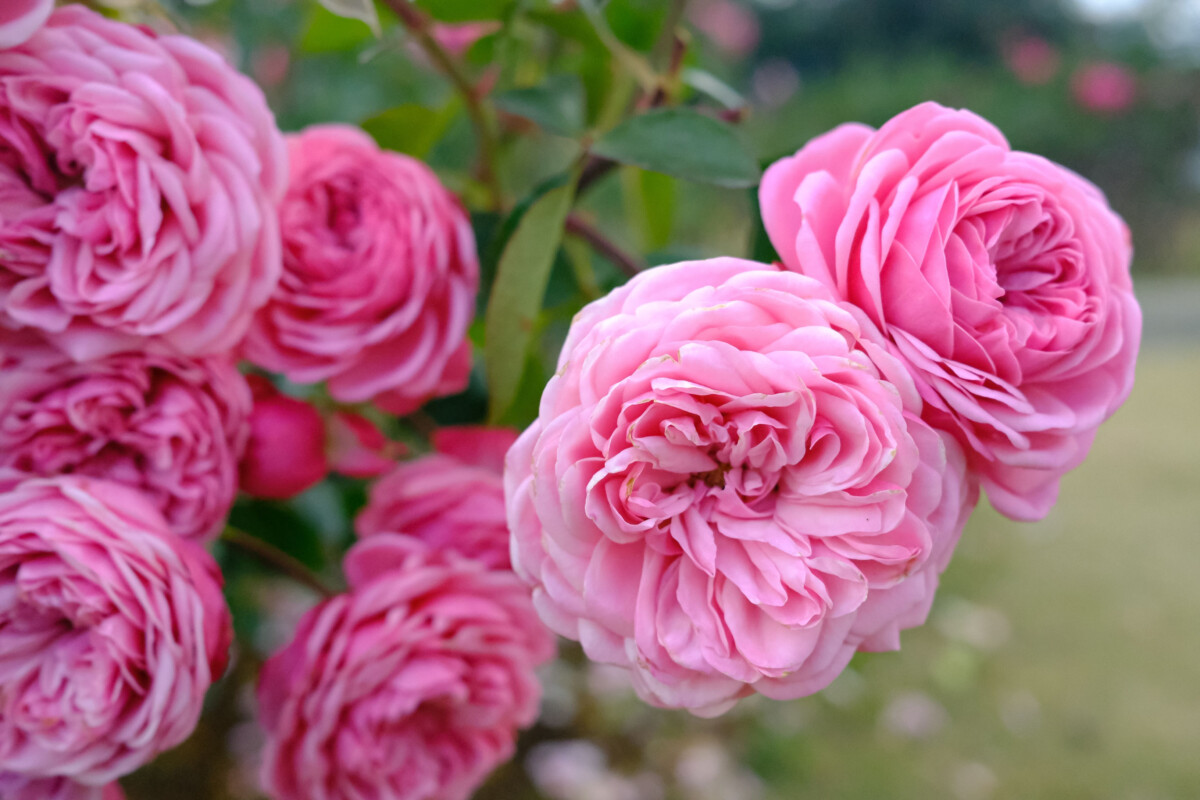
Different roses have different scents and surprisingly, just like wine, one rose can hold several different notes. Some roses smell as sweet as honey, some smell like berries and others give off a fresh lemony scent. The fragrance of roses is more intense in the morning and in the evening, so plan to go out in the garden when roses are at their peak scent.
Here are some fragrant roses to bring into your garden:
Rosa ‘Joasine Hanet’ – an old damask Portland cultivar with subtle notes of sweet spices;
Rosa ‘The Generous Gardener’ – a shrub rose with an old-fashioned musky fragrance;
Rosa ‘Gertrude Jekyll’ – a classic English rose with a quintessential rose fragrance;
Rosa ‘Compassion’ – a climbing rose that smells of ripe apricots and peaches;
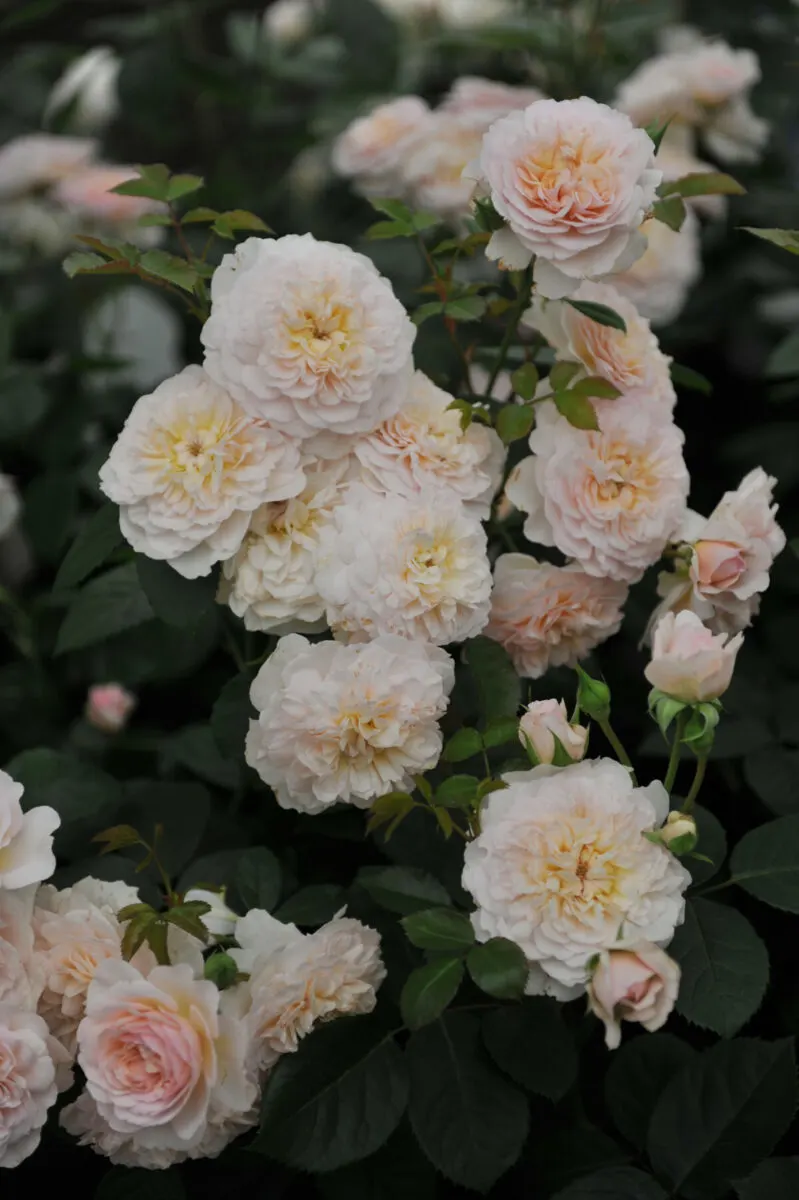
Rosa ‘Emily Bronte’ – an English shrub rose with delicious notes of grapefruit and lemon;
Rosa ‘Honey Perfume’ – a floribunda rose with sweet notes of honey and spices;
Rosa ‘California Dreamin’ – a hybrid tea rose that smells like citrus.
2. Honeysuckle (Lonicera)
Have you ever used the phrase “it smells like honeysuckle” to describe something that wasn’t honeysuckle at all? I find it beautiful and telling that we use honeysuckle as a way to describe other permeating summer smells. It goes to show the lasting impression that this scent has on us.
In this article on how to propagate honeysuckle from cuttings, I talked about the distinction between Japanese honeysuckle, American honeysuckle and European honeysuckle and how you can tell which one you’re growing.
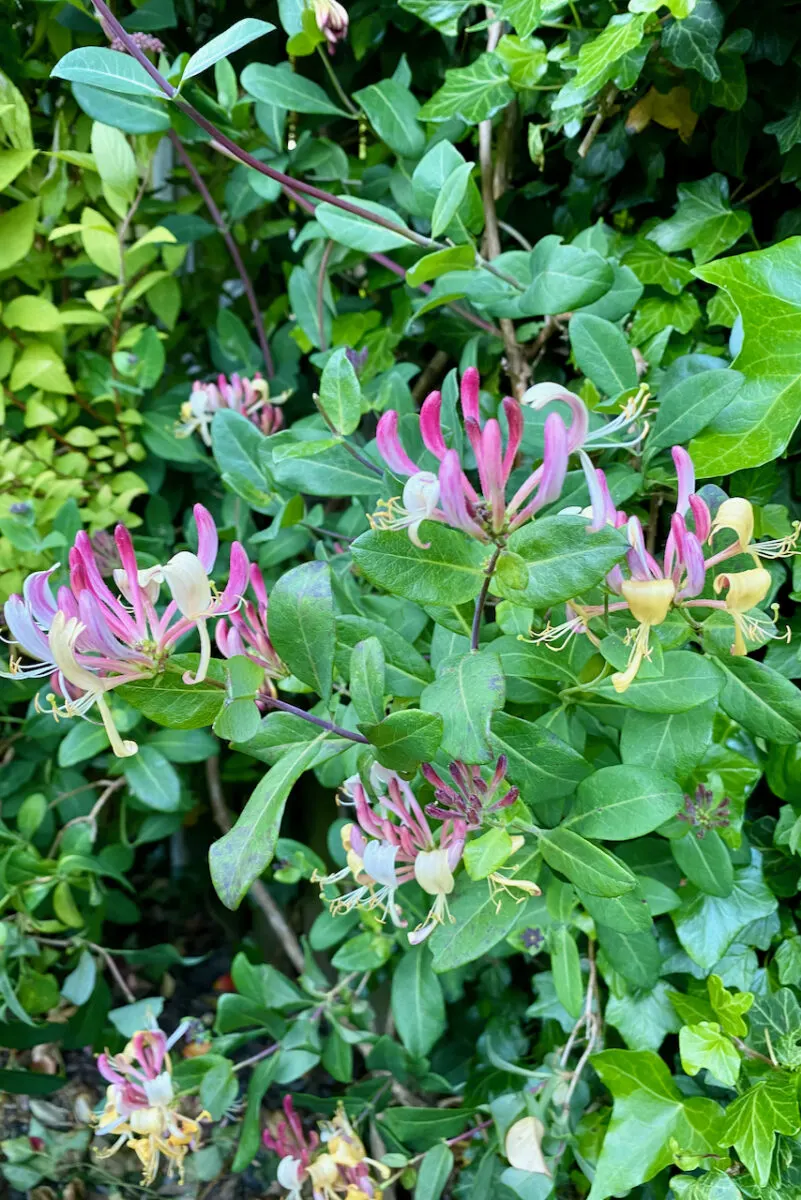
Japanese honeysuckle (Lonicera japonica) is the most fragrant of the three. Unfortunately, it is also the most invasive if it escapes cultivation, so I highly recommend steering clear of bringing it into your garden.
Fortunately, there are other types of honeysuckle that are more mild-mannered and smell just as charming. Dutch honeysuckle (Lonicera Periclymenum) has a few common cultivars that smell divine – ‘Belgica’, ‘Serotina’, ‘Scensation’ and ‘Berries Jubilee.’
Lonicera reticulata (with blue-ish leaves) and Lonicera fragrantissima (a shrub variety that blooms in spring) are two other types of honeysuckle that carry a combination of fruity, vanilla and citrus smells.
3. Star jasmine (Trachelospermum jasminoides)
Since we’re on the topic of climbing vines, it would be a sin not to mention jasmine. In my garden, honeysuckle and star jasmine share a fence. It would be impossible at this point to separate their tangled branches, so I let them grow and count my blessings when they both bloom in quick succession.
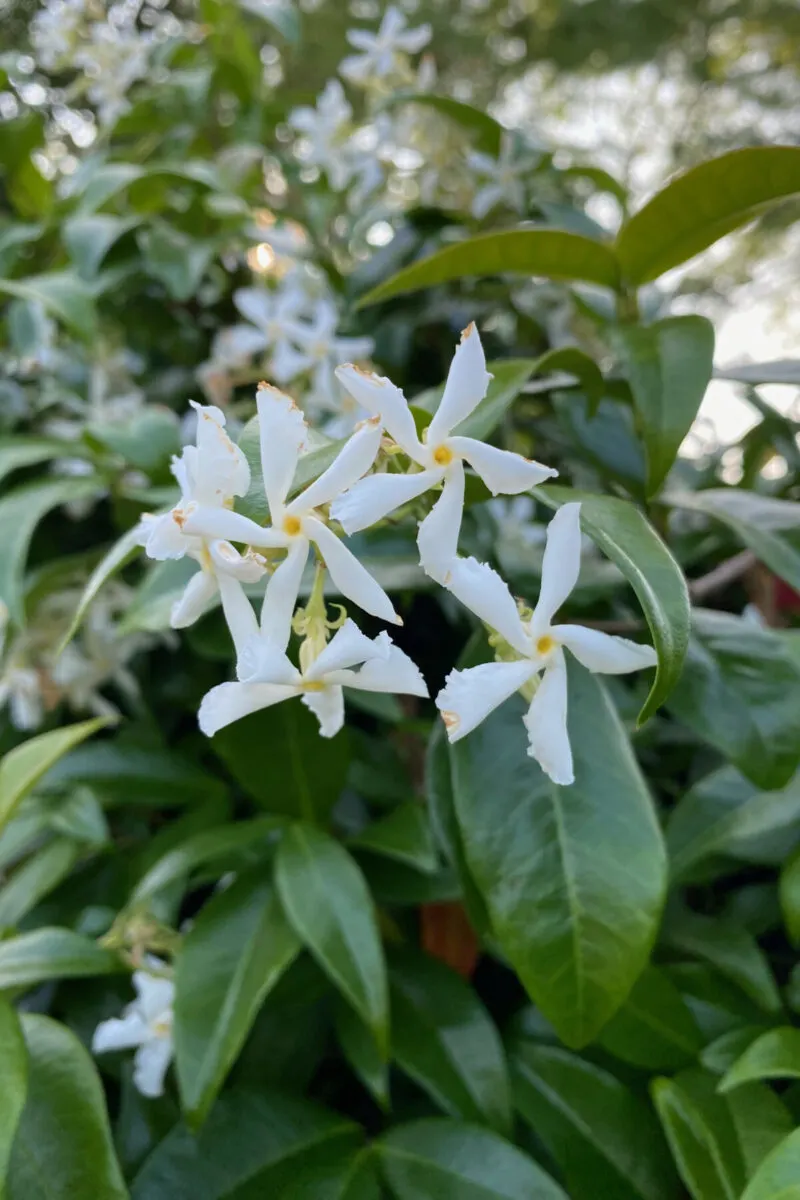
The honeysuckle is the first one to open up with the frothy pinwheel flowers of the star jasmine vine quick on its heels. The sweet mid-June overlapping these two smells is heavenly. Both of these vines release their fragrance in the evening, so you’d better plan for an after-dinner cocktail hour on the porch.
If I wanted to describe the smell of jasmine, I’d have to resort to using other floral smells as a frame of reference. Jasmine flowers smell like paperwhite narcissi, orange blossoms or gardenia. That’s because they all share an organic compound called indole. In small quantities (just a whiff in the summer breeze), indole is one of the most subtle and delicious fragrances. But if you bury your nose in the blooms and take a deep breath, the experience might leave you lightheaded (and not in a good way).
4. Dianthus
Dianthus is the name of the genus, but there are hundreds of species and even more when you count all the cultivars. You might know them as pinks, carnations or Sweet William (Dianthus barbatus). Another popular name for dianthus is cottage pinks, due to these fragrant beauties being a staple of the cottage garden.
I prefer to call them all dianthus. First, to avoid confusion. But secondly, I think the Greek moniker, roughly translated to “divine flower,” fits them like a glove.
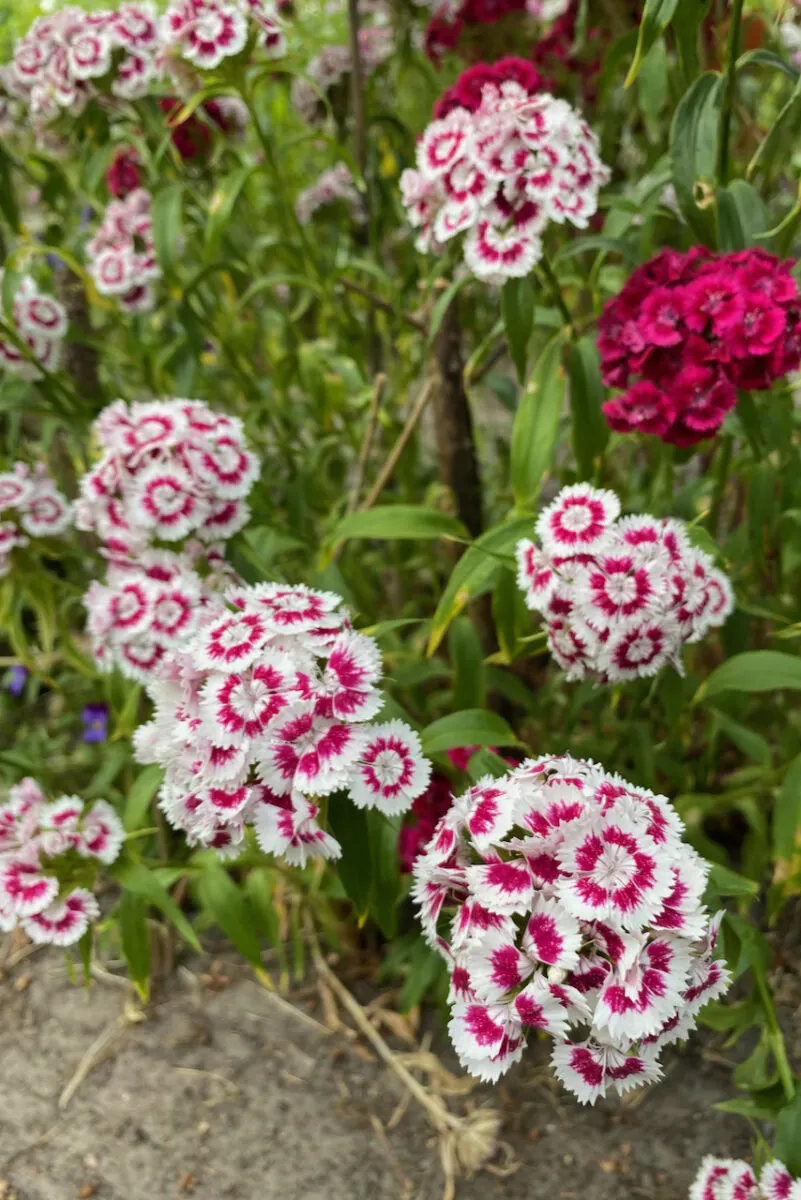
There are dianthus for every type of taste and garden imaginable. You can find them as annuals, biennials, herbaceous perennials and even shrubs. The closer you keep to the cottage garden varieties, the stronger their clove-scented smell. Dianthus release their scent throughout the day, and will even smell beautifully when you bring them indoors in cut flower arrangements.
Keep in mind that not all dianthus will smell as strongly. Take, for example, some popular varieties of tall, upright florist’s carnations – the kind you’d see adorning a prom corsage or a wedding bouquet. While they have been bred to be long-lasting cut flowers, their scent is not as strong as their less tame counterparts.
5. Valerian (Valeriana officinalis)
You might be familiar with valerian as a mainstay on the shelves of the health food store. Ground valerian roots are used as an herbal supplement that helps lower anxiety and improve symptoms of insomnia.
Personally, I plant valerian in my garden for the pollinators. The tall stems hold large poofy blooms that tower over the garden in May and June.
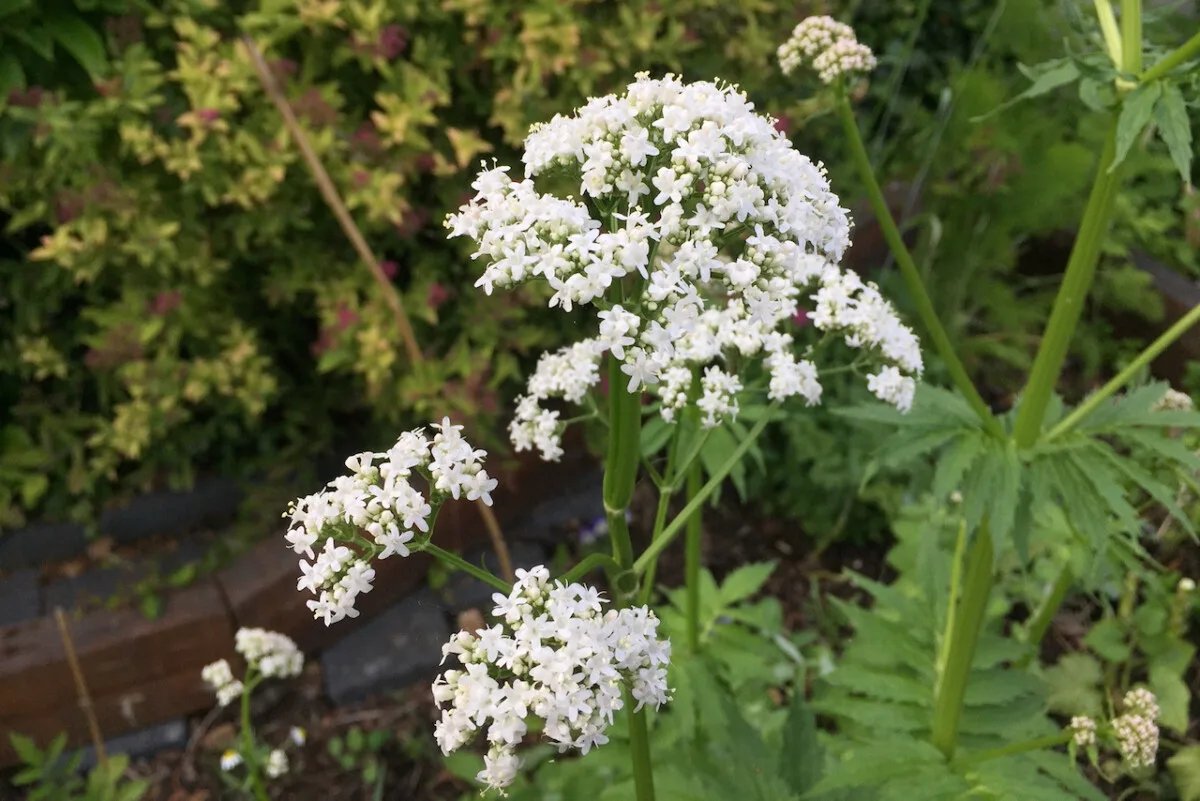
A secondary reason why I plant valerian is because I enjoy its sweet sweet fragrance. Yes, I used “sweet” twice because it can sometimes be a bit too much. The weird thing about valerian is that, at least to me, it goes from smelling like a deliciously spicy vanilla ice cream with notes of anise to a more foul version of this fragrance as the plant prepares to go to seed.
The good thing is that the pleasant part of this process lasts for weeks (in order to attract as many pollinators as possible), while the more stinky one is over in a couple of days.
But since smell is such a subjective preference, you might end up liking both the Dr. Jekyll and Mr. Hyde side of Valeriana officinalis.
6. Sweet peas (Lathyrus odoratus)
Let’s talk about sweet pea flowers for a minute, shall we? The Latin name of this early summer stunner is Lathyrus odoratus. I see “odoratus,” and I immediately start thinking of an ambush of aromatic fragrances. But in yet another case of sacrificing substance for form, we’ve been focusing so much on the appearance of the flowers while breeding the scent out of them.
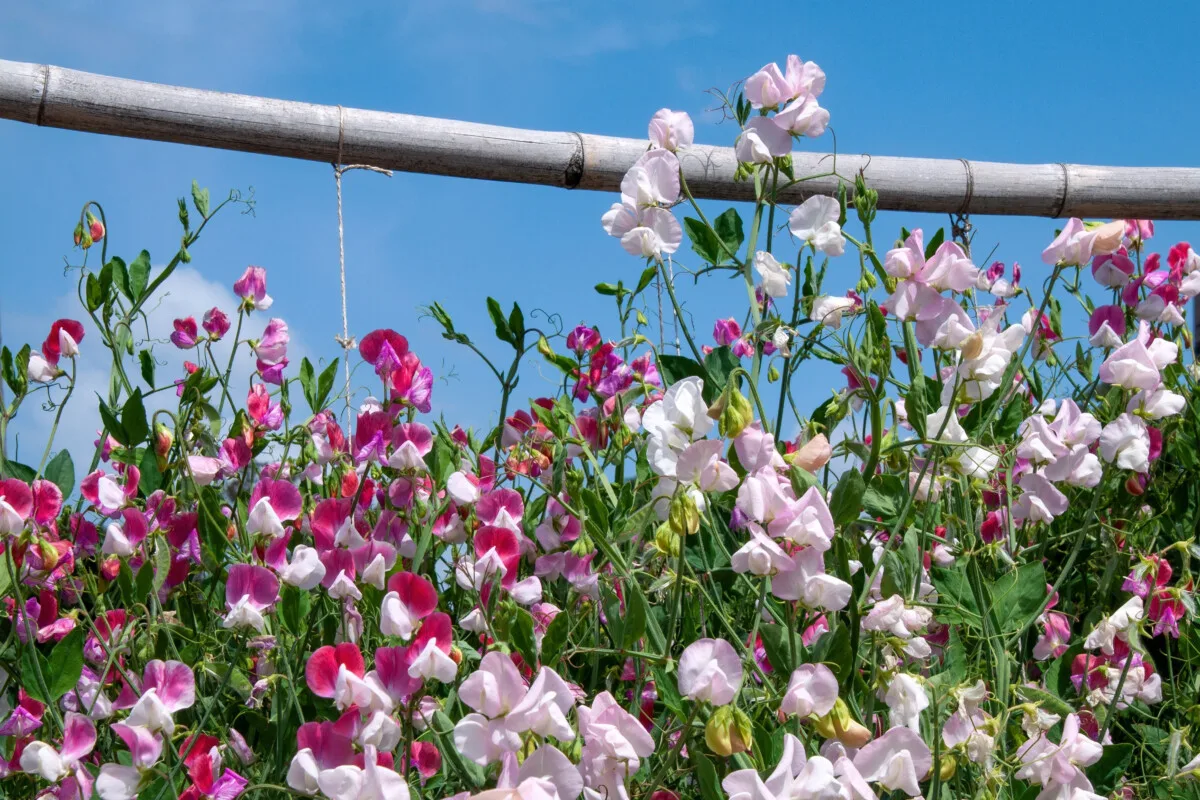
Here’s a bit of trivia for the sweet pea lover: the flowers are self-pollinating. This means that they don’t need to produce fragrance to attract pollinators and the flowers are already fertilized by the time they open up.
However, there are some sweet peas (generally heirloom varieties) that are simply pulsating with fragrance. The best way I can describe it is a spicy fruitiness, with notes of vanilla and tangy citrus in some cases.
With about 1200 cultivars of sweet peas on the market, it’s hard to know where to begin. So start with these cultivars:
Lathyrus odoratus ‘High Scent’ – vanilla colored flowers with blue or mauve edges;
Lathyrus odoratus ‘Primrose’ – a deep yellow cultivar with small, dainty flowers that smell like vanilla;
Lathyrus odoratus ‘Lisbeth’ – a tall pink climber that smells like grapefruit;
Lathyrus odoratus ‘Cathy’ – a cream-colored sweet pea with ruffled petals that smell like vanilla ice cream;
Lathyrus odoratus ‘Albutt Blue’ – a grandiflora variety that smells spicy and fruity.
7. Scented clematis
If you have been growing clematis for its showy blooms, yet have never ever caught a whiff of clematis fragrance, rest assured you are not crazy. Not all clematis cultivars are fragrant. In fact, most clematis cultivars that we grow in our garden today have been bred for looks, not for their smell. So most hybrids with large, showy flowers don’t smell much. (This is beginning to sound like a familiar story, right?)
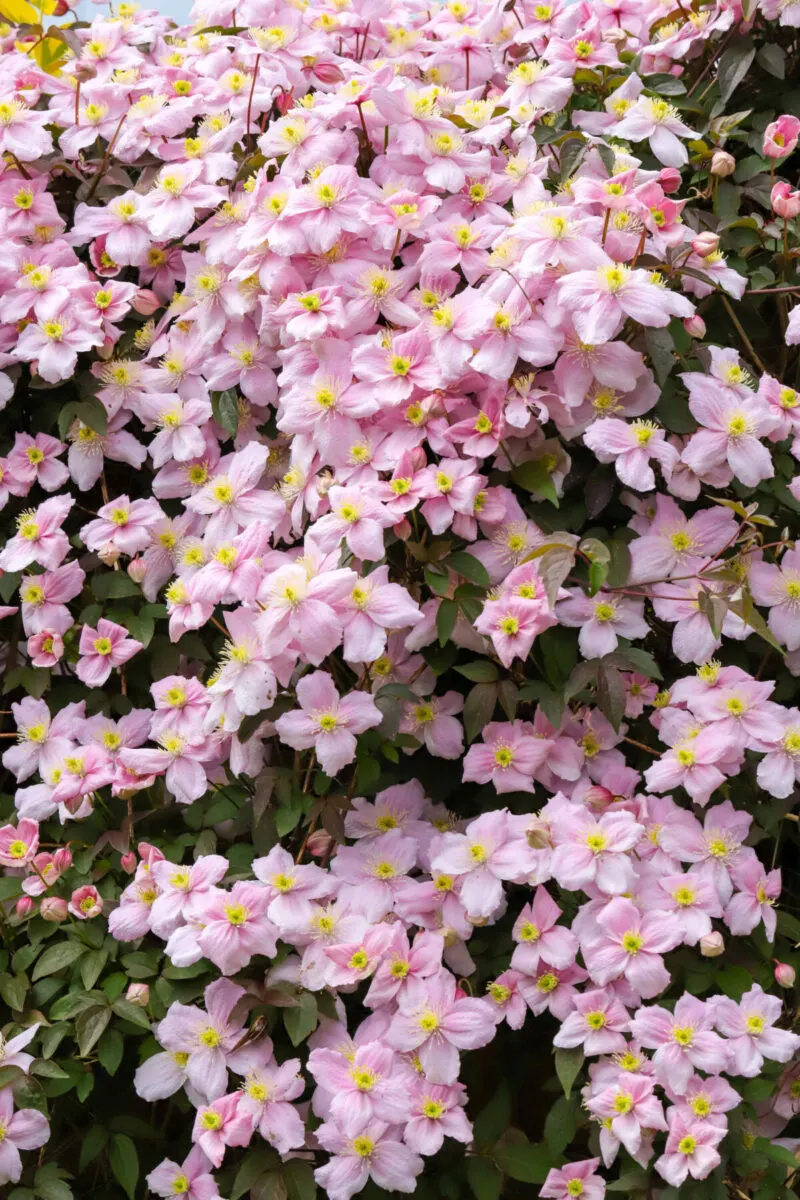
If you’re looking for a sweet-smelling clematis for your summer garden, choose one that’s closer to the natural way this vine grows in the wild. The Clematis montana group is always a safe bet, with ‘Pink Perfection’, ‘Rubens’, ‘Freda’, ‘Etan’ and ‘Wilsonii’ as popular choices of cultivars.
The evergreen Clematis armandii smells like vanilla and honey with hints of spices. Or you can go for Clematis virginiana, a native to the United States that’s similar in scent to the sweet autumn clematis (C. terniflora), but will not spread as aggressively.
8. Lavender (Lavandula)
It would be remiss of me to write about fragrant gardens without mentioning the queen of soothing scents – the lavender.
Its calming smell means that you’ll find it as an ingredient in all sorts of aromatherapy products, from essential oils to sachets, sleep masks and cosmetics. The attraction of lavender is that every part of the plant is fragrant, from the roots to its stems, leaves and flowers.
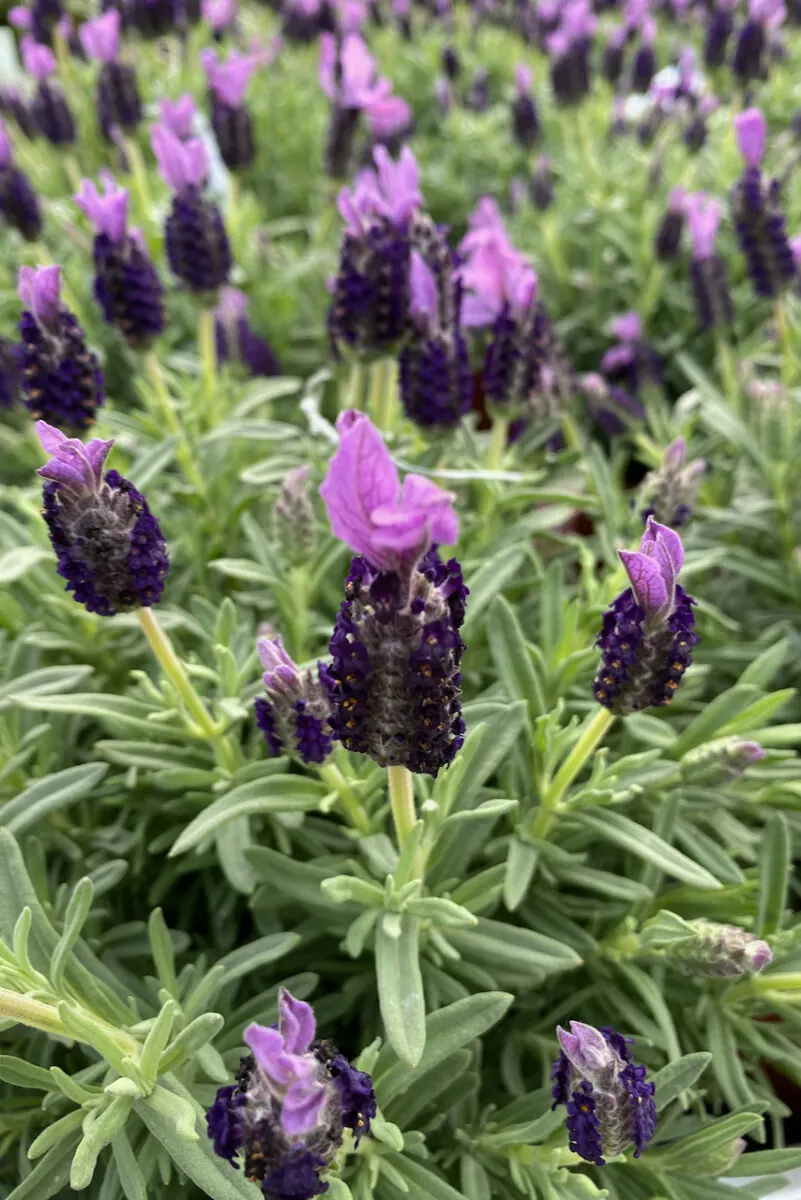
However, unlike most of the plants on this list, lavender needs a bit of prompting to release its fragrant oils. So if you want to get the most of that strong lavender smell, plant it somewhere where you’re likely to keep brushing against it as you walk past. The front row of a border or next to your patio dining area are two good spots to enjoy the aroma of this Mediterranean plant. English lavender and French lavender are both fragrant choices if you want to bring this herb into your garden.
9. Scented pelargoniums
Let’s get on the same page first. Both geranium geraniums and pelargonium geraniums are perfect plants for a fragrant garden. (I wrote about the difference between the two in this article.)
Personally, I find the scent of window box geraniums (the fiery red ones) extremely overpowering. It’s heavy and quite the opposite of subtle. If I accidentally brush against such a geranium, I have to wash off the smell immediately because it lingers for so long. But then again, smell is subjective, and I know gardeners who absolutely love that musky fragrance.
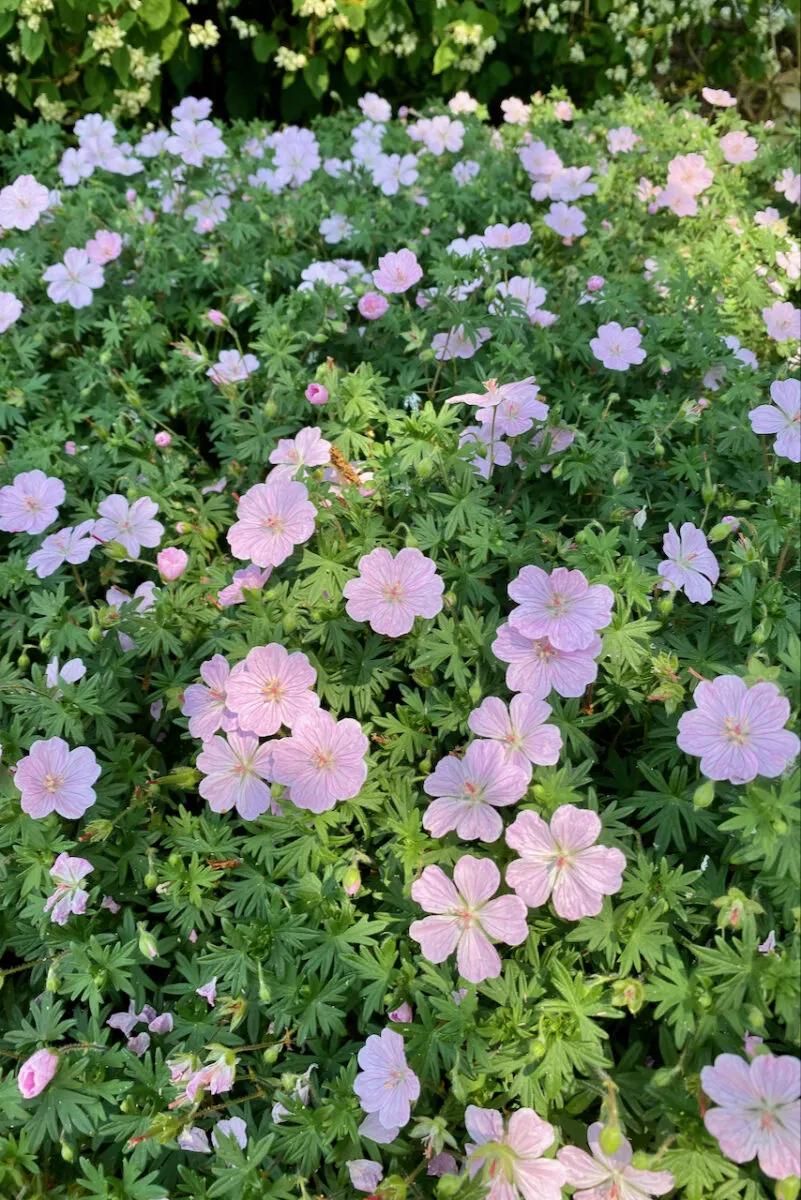
Other pelargoniums, however, are like the true scent chameleons of the garden. They don’t exactly have a distinctive smell of their own, but you could easily use other plants to describe what they smell like: lemon, mint, rose, pineapple, berries or cinnamon.
There are hundreds of cultivars to choose from, but here are some that will get you on the right path and their associated fragrance:
Pelargonium ‘Colocho’ – rose
Pelargonium ‘Mabel Gray’ – grapefruit
Pelargonium ‘Prince Rupert’ – lemon
Pelargonium ‘Pink Capricorn’ – berries
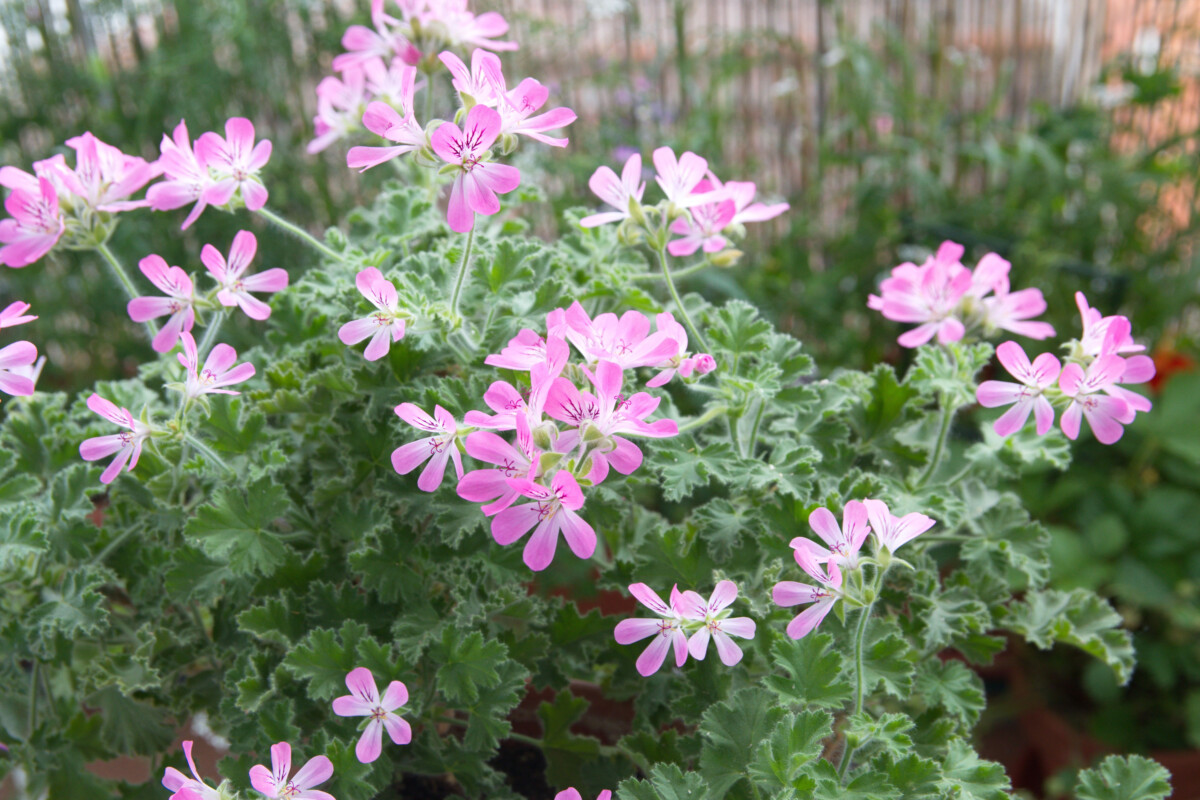
Pelargonium ‘Ginger’ – yes, ginger
Pelargonium ‘Apricot’ – obviously, apricot
Pelargonium ‘Countess of Scarborough’ – strawberry
10. Garden phlox or Tall phlox (Phlox paniculata)
Phlox paniculata was one of the first plants to transition from a native wildflower to a gardener’s favorite in the United States, and that is likely due to its very strong fragrance.
All the plants in the Phlox species are herbaceous perennials and they all belong in a scented garden. Tall phlox is not the only one that’s fragrant. Moss phlox (Phlox subulata), prairie phlox (Phlox pilosa) and creeping phlox (Phlox stolonifera) are all, in their own right, deliciously fragrant plants.
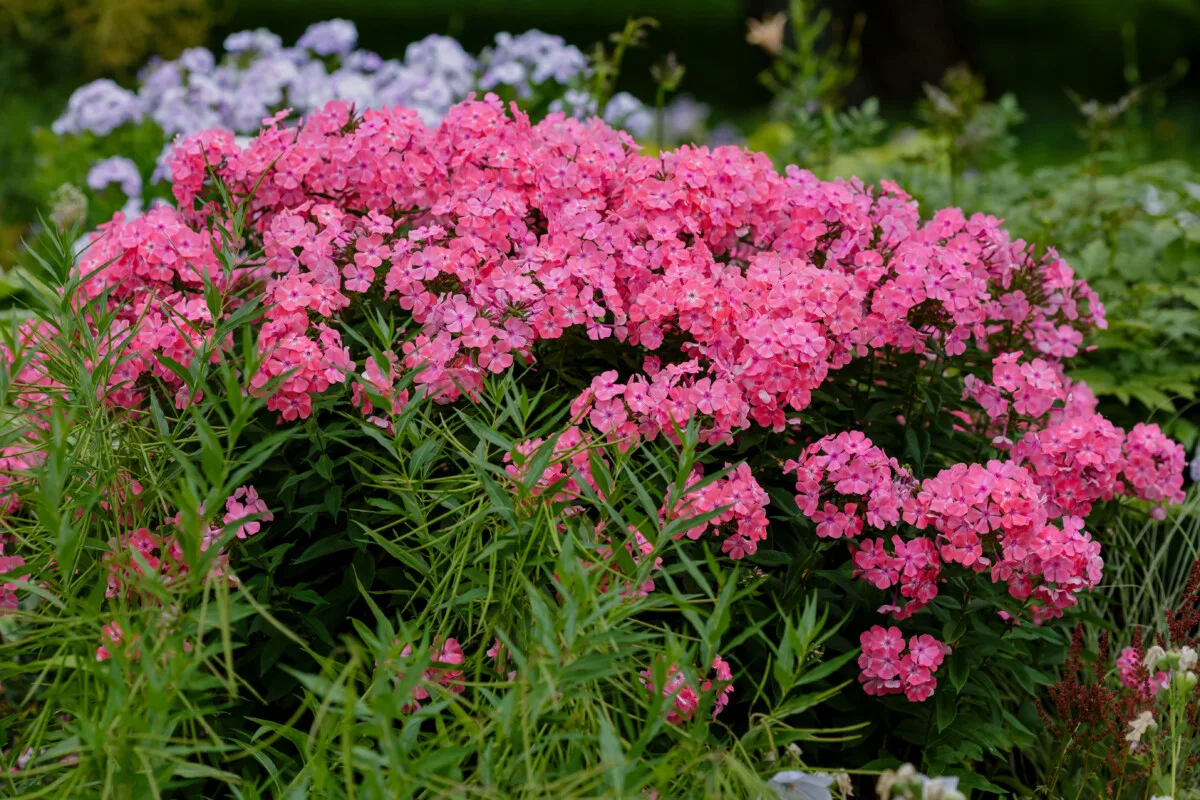
However, the tall garden phlox gets a special mention because it is, well, tall. The smell – heavy clove, chocolatey, almost tobacco-like – is right there, in your face, very close to nose level.
Undoubtedly another attractive feature of the garden phlox is the fact that it’s a long-blooming perennial. If you plant it in full sun, it can stay in bloom for up to two months.
11. Flowering tobacco (Nicotiana sylvestris)
Flowering tobacco (Nicotiana sylvestris) is not the same as the tobacco plant that’s harvested for smoking (Nicotiana tabacum). But they both belong to the nightshade family (Solanaceae). They both grow just as tall and their leaves look very similar.
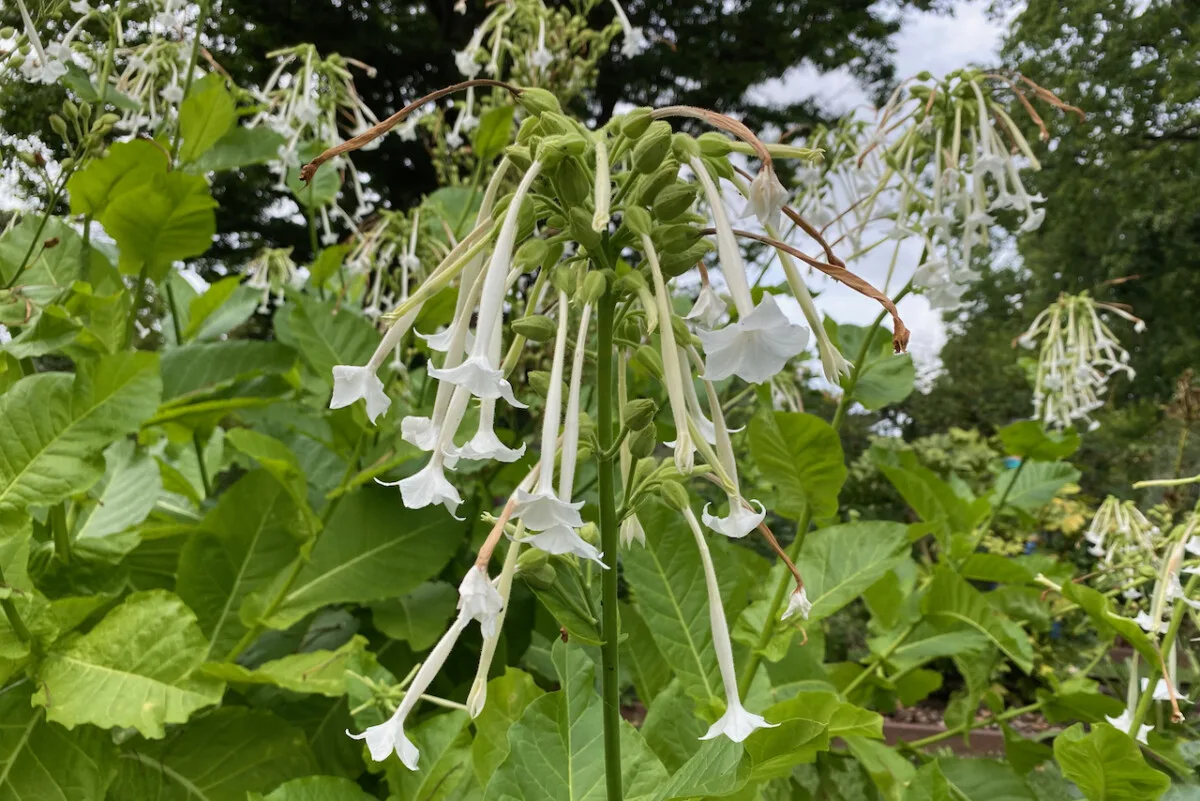
The trumpet-like white flowers of Nicotiana sylvestris start releasing their jasmine-like fragrance at dusk. Plant it next to a window that you usually open in the summer and early fall and you’ll see why this short-lived perennial is worth the fuss.
In some gardening zones, however, you may have to grow it as an annual, since Nicotiana won’t handle cold winters very well. It does self-seed, and as long as the seeds get enough spring moisture, they’ll readily start growing again the following year.
12. Alliums
When I was drawing up the shortlist of what scented plants to include in this article, I went back and forth in my mind a few times on whether I should mention spring bulbs. On the one hand, spring bulbs such as hyacinths, freesias and paperwhites, are an absolute olfactory riot. On the other hand, everyone already knows this about them. Not to mention the fact that they’re done and dusted, receding back into the ground by the time the garden truly takes off in June.
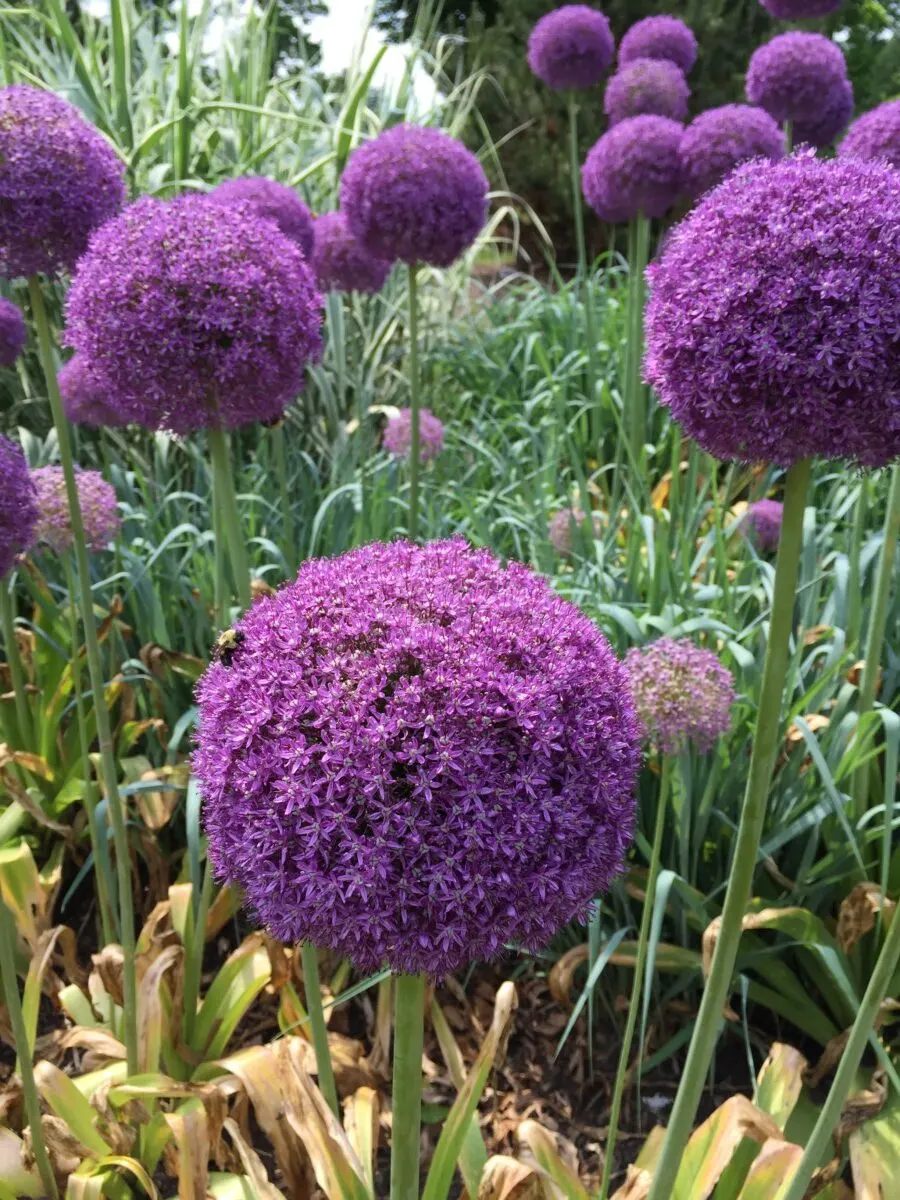
So as a sort of compromise, I’m including ornamental alliums on my list of fragrant plants. They’re a bulb (check!); they bloom in the summer (check!); and they can bring a delicious smell to the garden (check!, but only some varieties).
If you guessed that ornamental allium flowers smell like garlic, I kindly invite you to guess again. There’s a lot of variety in the genus, so start with these tried and tested alliums if you’re planting a scented garden:
Allium perdulce – a small North American native that smells like hyacinths;
Allium ‘Millenium’ – a popular cultivar that resembles lilac both in color and in fragrance;
Allium ‘Red Eye’ – sweet-scented white florets with a red center;
Allium azureum – an icy blue allium with a floral aroma;
Allium ‘Sugar Melt’ – a pale pink variety with a subtle cotton candy smell;
Allium ‘Purple Beauty’ – a sweet scented allium with delicate indigo florets.
I truly believe that scent is the most fascinating of our senses. It’s the only one that we first process chemically before we even become aware of it. Think about how many times you smelled something before you became consciously aware of that thing’s presence.
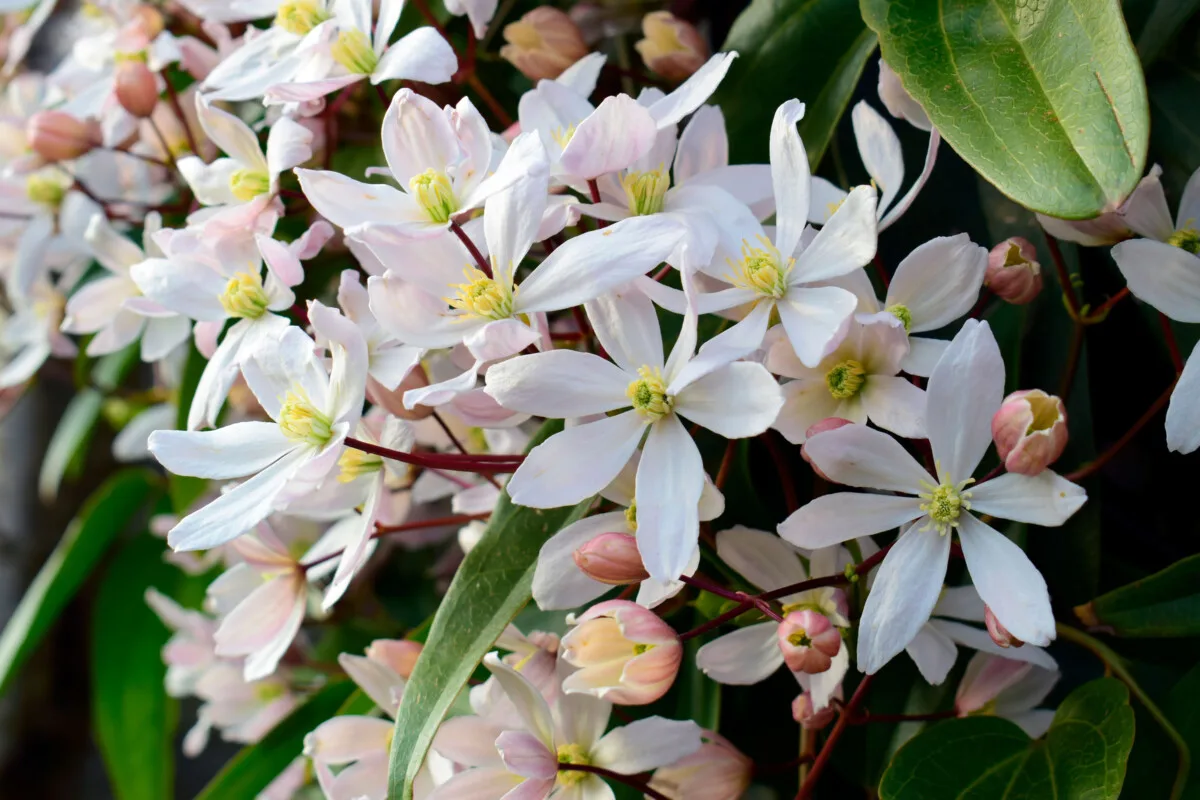
Playing and experimenting with awakening this sense throughout our growing spaces will not only deepen our connection to our gardens, but it will also enable us to create beautiful olfactory memories that we can treasure for years to come.

